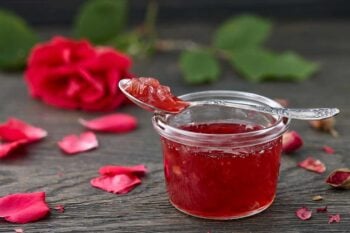It’s no surprise nail polish doesn’t fit into the category of natural products. In fact, reading the ingredients on a bottle of polish is downright scary! But like many people, my little girl loves nail polish, so I wanted to make sure she could paint her nails in the safest, most eco-friendly way possible.
Here’s the toxic nail polish ingredients to avoid, and a list of eco-friendly, non toxic nail polish brands you can choose instead…
The Toxic Trio
In 2006, public health advocates brought attention to the “toxic trio” of chemicals found in many popular nail polish brands. Inhaling these three chemicals could lead to developmental defects and cause damage to your nervous system and the environment over time.
From DavidSuzuki.org:
1. Dibutyl phthalate
Used as a solvent for dyes and as a plasticizer to prevent nail polishes from becoming brittle, dibutyl phthalate is classified as a suspected endocrine disruptor and as toxic to reproduction. DBP is associated with liver and kidney failure in young children when products (and polished little fingers) containing phthalates are sucked or chewed for extended periods. Although the U.S. has banned many phthalates (including DBP) in soft vinyl children’s toys, its use in cosmetics is not restricted. The European Union classifies DBP as very toxic to aquatic organisms.
2. Formaldehyde
Formaldehyde is a common ingredient in nail hardeners in concentrations of up to five per cent. In nail polish, tosylamide/formaldehyde resin is used, and may contain residual formaldehyde concentrations of up to 0.5 per cent. The International Agency for Research on Cancer and the EPA classify formaldehyde as a known human carcinogen.
3. Toluene
Toluene is a moderate skin irritant that can cause dermatitis with prolonged contact. It is also a developmental toxicity hazard that can cause birth defects, and has been identified in human milk. Inhalation of toluene vapor can affect the central nervous system causing drowsiness and headache at low levels and irritation of the nose, throat and respiratory tract at increased levels.
Exposure to these toxins is a considerable health threat to salon professionals and to children. So following the initial uproar, many brands removed these three toxins from their products, and labeled their polishes as “3-free products.”
Despite this, a 2012 report by California’s Department of Toxic Substances Control revealed that only five out of seven products that claimed to be “3-Free” actually were indeed free of the three toxins. Although the report noted that the department only tested 25 products on the market today, it is clear that not all manufacturers list ingredients truthfully on labels.
A number of manufacturers have since taken the extra step of specifically excluding formaldehyde resin and camphor from their polishes, in addition to the toxic trio, making them “5-Free.”
“8-Free” polishes also exclude ethyl tosylamide (a form of formaldehyde), xylene (a substitute for toluene), and triphenyl phosphate (a replacement for DBP).
TPHP
Since DBP has fallen out of use in nail polish because highly publicized scientific studies showed that it is a likely endocrine disruptor and toxic to the reproductive system, nail polish manufacturers have turned to Triphenyl phosphate, or TPHP, as a replacement for DBP, to improve polish flexibility.
Unfortunately, TPHP is also an endocrine-disrupting chemical that is commonly used to make plastics and as a fire retardant in foam furniture. And if you wear nail polish, it could be in your body too.
In a recent study, researchers at Duke University tested the urine of 26 women who had recently painted their nails and found evidence of TPHP in every participant. Levels of the chemical in the women’s urine increased sharply after they applied the nail polish.
The most recent studies are shocking: they suggest that TPHP interacts with a protein central to regulating the body’s metabolism and production of fat cells. Scientists are conducting more investigations to discover whether, in fact, TPHP contributes to weight gain and obesity.
TPHP is listed on the ingredient labels of a wide array of nail polishes now on the market. Out of more than 3,000 nail products in EWG’s Skin Deep database, half are using TPHP. Even worse, some polishes contain it but don’t disclose it.
Some of the brands that contain TPHP (among other toxins), according to the study, include:
- Sally Hansen
- OPI
- Revlon
- Milani
- Wet N Wild
- SpaRitual
- Orly
- theBalm
- Nuance by Salma Hayek
- Maybelline
- Beauty without Cruelty
Non-Toxic Nail Polish Brands
Conventional nail polishes were originally derived from automotive paint in the early twentieth century. They are made of petrochemicals, lacquers, and solvents, and come with all of the health and environmental issues that are associated with those products.
The advent of “5-free,” and now “8-Free” or even “14-Free,” vegan polishes still does not solve the problem or make them “safe.” They can still smell bad, still can be lit on fire, and still cause nail, skin and other health issues.
The European Union has banned the use of these chemicals in cosmetics for years now, while the U.S. Food and Drug Administration has not yet taken any regulatory action.
While there is no regulatory system in place yet, there are a few nail polishes that are free of major toxins, and are also eco-friendly:
- Honeybee Gardens – This is a water-based polish that lacks the nasty smell you expect from solvent-based polish. You don’t even need to buy a polish remover for these colors: you can use rubbing alcohol or vodka to remove them.
- Piggy Paint – Piggy Paints were created by a mother concerned about the harsh chemicals found in the polishes her daughters wanted to wear. This brand is toxic-free, water-based, hypoallergenic, and comes in kid-friendly colors.
- Karma Naturals – Catering mostly to adults, this water-based, non-toxic polish contains no petrochemicals and comes in lots of lovely, grown-up shades.
Less Toxic Nail Polish Brands
These brands are less toxic, but use them at your own risk; they are still a solvent-based, petroleum product.
- Essie – This nail polish has an “8-free”, vegan formula—without formaldehyde, toluene, dibutyl phthalate, formaldehyde resin, camphor, ethyl tosylamide, xylene, triphenyl phosphate or animal derived ingredients. Not recommended for kids who still put their fingers in their mouths or nail-biters.
- ella + mila – This nail polish is “7-Free,” and vegan, but not water-based or totally non-toxic, so it’s not a good idea for kids who still put fingers in their mouths, or nail-biters.
- Zoya – Zoya is “10-Free”, and it does not contain formaldehyde, formaldehyde resin, dibutyl phthalate, toluene, camphor, TPHP, xylene, ethyl tosylamide, parabens, or lead. “10-free” is mostly a marketing ploy, since parabens and lead are not used in any major nail polish brands. Not recommended for kids who still put their fingers in their mouths or nail-biters.








